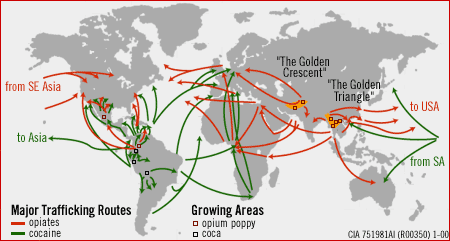

The US federal government is an opponent of the illegal drug trade; however, state laws vary greatly and in some cases contradict federal laws.
The Organization of American States estimated that the revenue for cocaine sales in the US was $34 billion in 2013. The Office of National Drug Control Policy estimates that $100 billion worth of illegal drugs were sold in the US in 2013.[1]
In the fiscal year of 2023, a total of 19,066 cases related to drugs were reported, with drug trafficking accounting for 18,939 of these cases. The majority of drug trafficking crimes, amounting to 98.1%, involved seven specific types of drugs. Quick Facts offers a general understanding of these crimes, although the details may differ depending on the specific drug involved in the offense.[2] In 2024, it was reported that LAX airport is the central hub for narcotics in the US, perhaps even the world.[3]
In the United States, "narcotics" and "drugs" are legally considered different classes and/or types of substances.[4]
- ^ "The Biggest Organized Crime Groups in the World". Fortune. 2014-09-14.
- ^ Drug Trafficking Retrieved 28 May 2024
- ^ "How L.A. became the cartels' global distribution center and why it's part of an even bigger problem". ABC7 Los Angeles. June 7, 2024.
- ^ DOJ, DEA (April 1, 2020). "DOJ/DEA Drug Fact Sheet: Narcotics" (PDF). Drug Enforcement Administration.